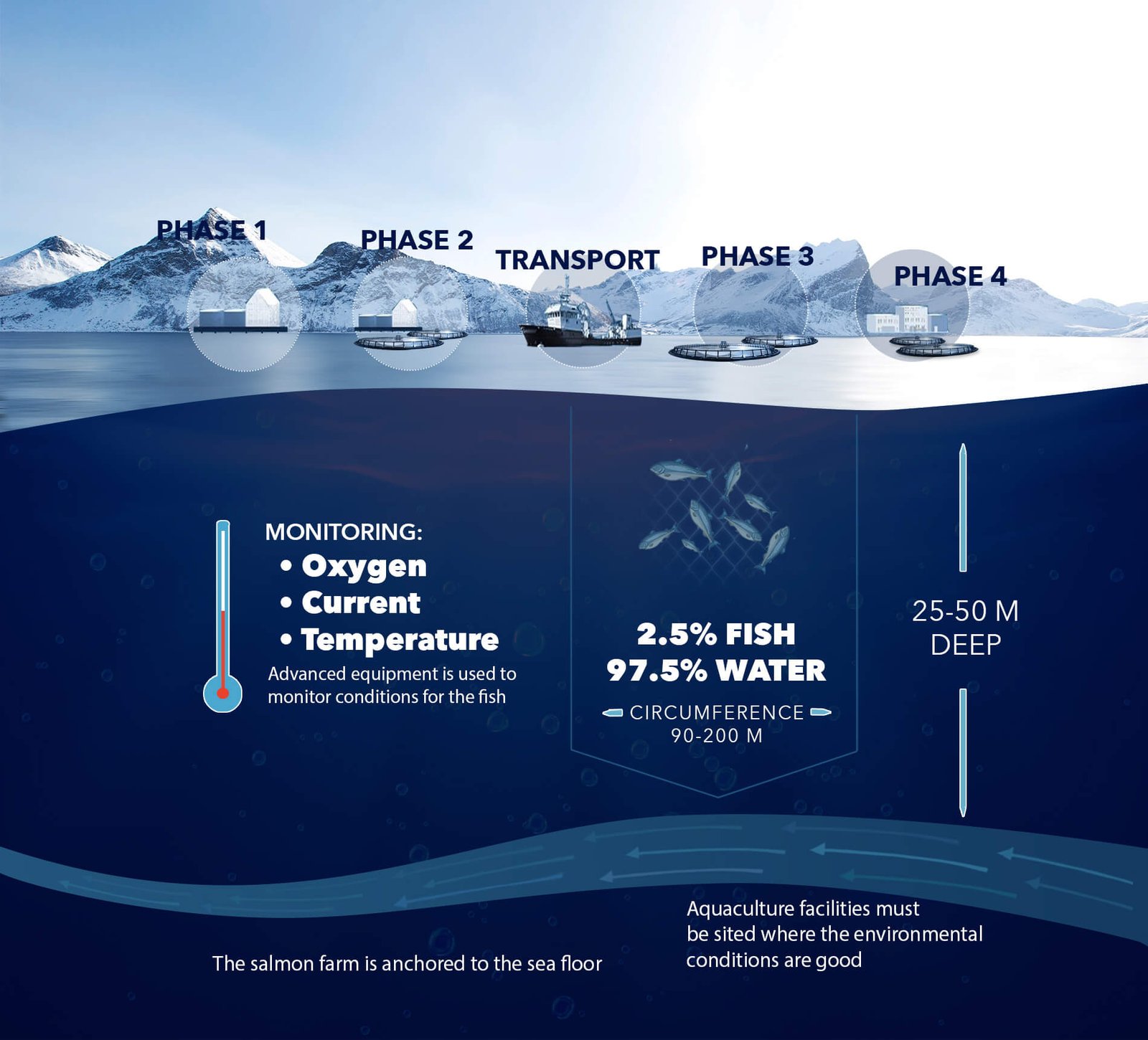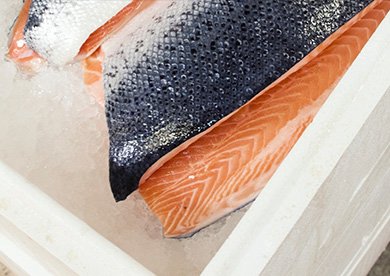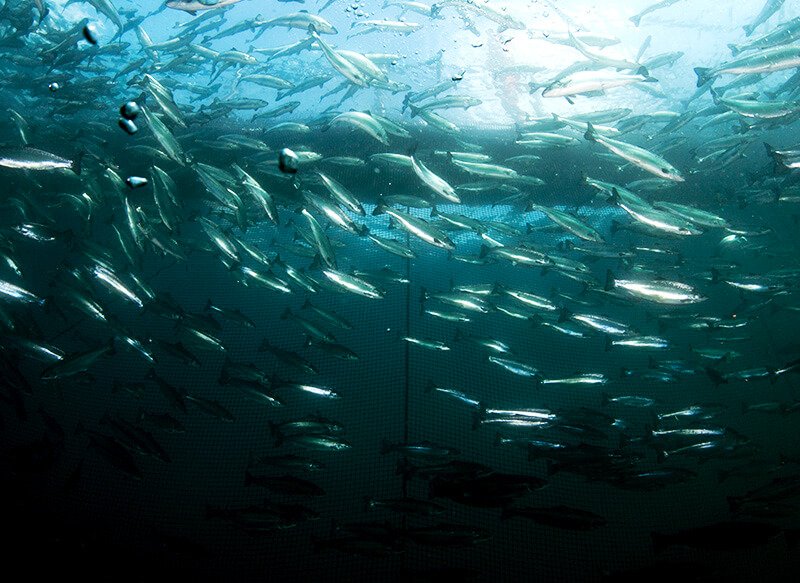Norwegian Atlantic Salmon Farming
Norwegian Atlantic Salmon Farming
The Atlantic Salmon farmed in North-Norway originates from the wild salmon of Norwegian rivers. As salmon farming was developing in the 1970s wild salmon was collected from 40 rivers. These were used to breed the Atlantic Salmon so popular around the world today.
The genetics of the original salmon is the same as of the wild Atlantic Salmon, but has been bread to grow faster, mature later and resist disease better than its wild brother.
Just as the wild Atlantic Salmon the farmed Atlantic Salmon life cycle starts in freshwater and is later introduced to salt sea water and the ocean pens.
Norway is world leaders in salmon quality and health due to resilient research and investment in technology. Our industry’s high standards and strict safety guidelines ensures a healthy and comfortable Atlantic Salmon life cycle in our producers pens.
We closely monitor the salmons health, growth and environment to promote health and comfort from hatching and all the way to maturity.


Atlantic Salmon Life Cycle
Animal Welfare
Salmon
Finished
product
he slaughter of the salmon is done very carefully not to induce stress on the fish. This is done both for the welfare of the fish as much as to ensure the quality of the meat.
The first leg of the last stage in the farmed Atlantic salmon life cycle is carefully bringing the salmon from the pens to the processing facility. A wellboat carefully pumps the fish from the pens into a tank. The salmon is then transported to resting tanks in the sea near the production site. The salmon rest here for 1-2 days before the final stage of the production.
In accordance with Norwegian regulations the fish is stunned before slaughtering to avoid any stress related to pain or fear as they are slaughtered, gutted, washed, sorted by size and quality.

 Finally, the salmon is put in cooling cases with ice and on their way to their destination market within 1.5-3 hours of leaving the water. From packing to reaching their destination the cold chain is never broken. The fish is stored in temperatures below 4 degrees Celsius during the whole transport.
Finally, the salmon is put in cooling cases with ice and on their way to their destination market within 1.5-3 hours of leaving the water. From packing to reaching their destination the cold chain is never broken. The fish is stored in temperatures below 4 degrees Celsius during the whole transport.Monitoring
Every salmon farm is responsible for the welfare of the salmon and the production facilities. They are obligated to check the facilities and the fish on a daily basis without disturbing the fish unnecessarily.
Norwegian regulatory inspections occur at least six times a year and the facilities get inspected by a veterinarian twice a year. Advanced alarm systems are checked weekly and operational plans are assessed bi-yearly by regulators.
Salmon are cold-blooded creatures who regulate their temperature through their surroundings. The Atlantic Salmon thrives in cold water which also contains higher levels of oxygen allowing for healthier and larger fish.
Living Conditions
All salmon ocean pens have to provide optimal living conditions for the entire Atlantic Salmon life cycle. Salmon is a herd animal and therefore needs to live with many others, but it is also a fish made for long distance journeys. They need space to move freely. Regulations ensure that salmon pens must have at least 97.5% of free space to swim and maximum 2.5% fish.
A typical ocean pen cannot surpass 200.000 fish and the net may be between 20 and 50 meters deep and have up to 250 meters circumference.
The pens must be free of sharp edges and materials that may be harmful for the salmon and prevent fish from escaping. The pens must also provide adequate protection from other animals and birds that may prey on the salmon.
Water Flow
The Norwegian coastline is particularly well suited for salmon farming. It is far stretched, reasonably shallow and well protected against waves from the Atlantic Ocean. With perfect cold and clear waters ideal for salmon farming Norway is one the world’s largest producers of farmed salmon. Still, only about 0.5% of the coastline is populated with salmon farms ensuring a sustainable production of fish to the world marked.
Salmon farm production sites are carefully chosen where there are good currents and natural flow of water running through the pens. After the pen is emptied of fish it is meticulosity cleaned and left vacant for at least three months. This is to ensure the seabed is completely cleaned before the pen is filled with a new generation of young salmon.
